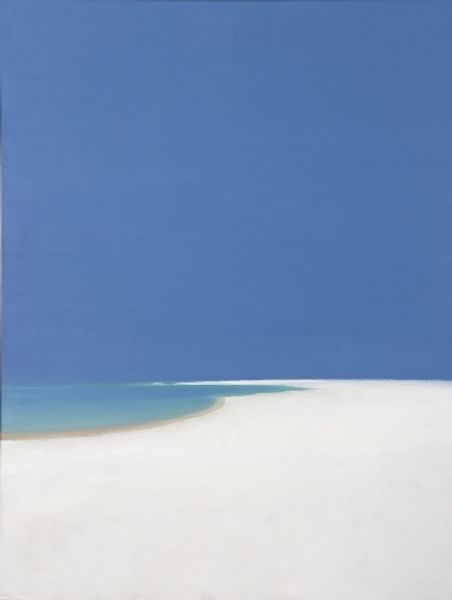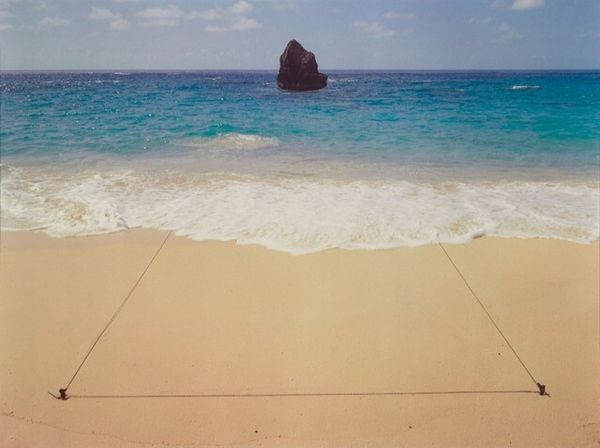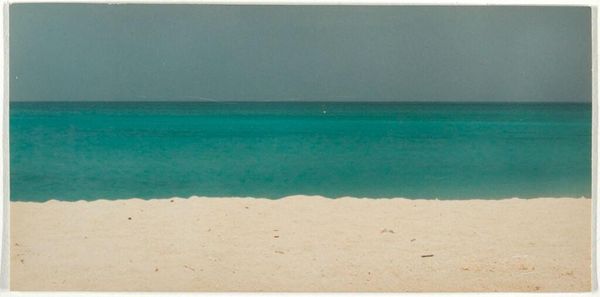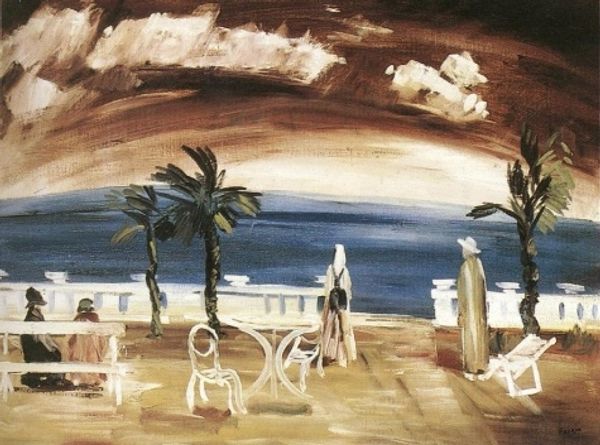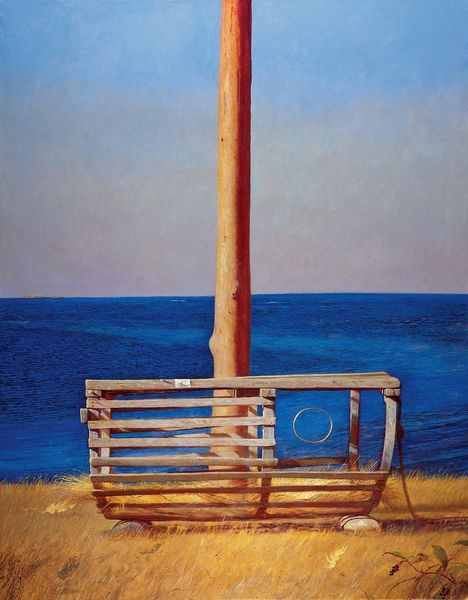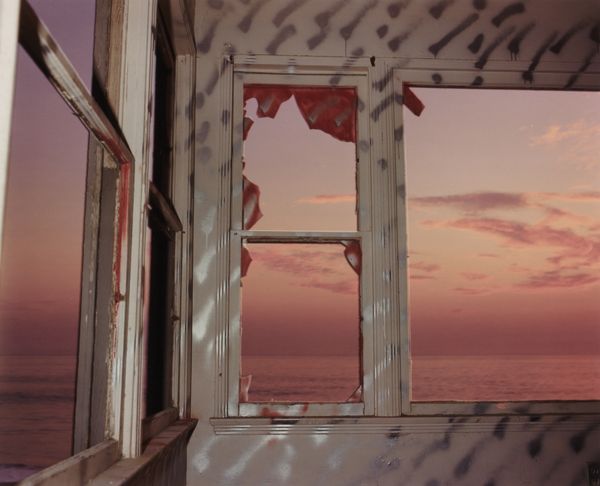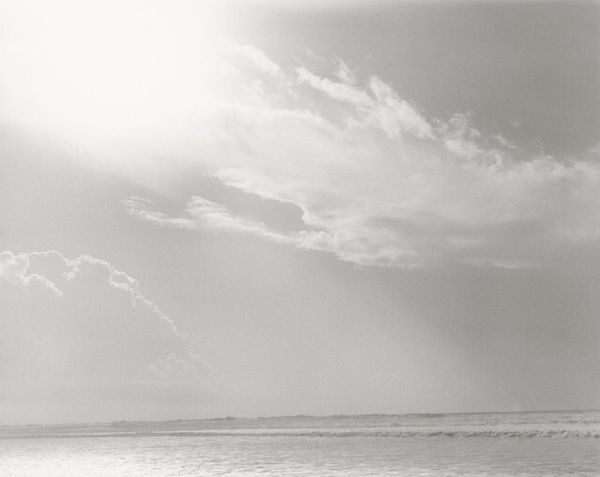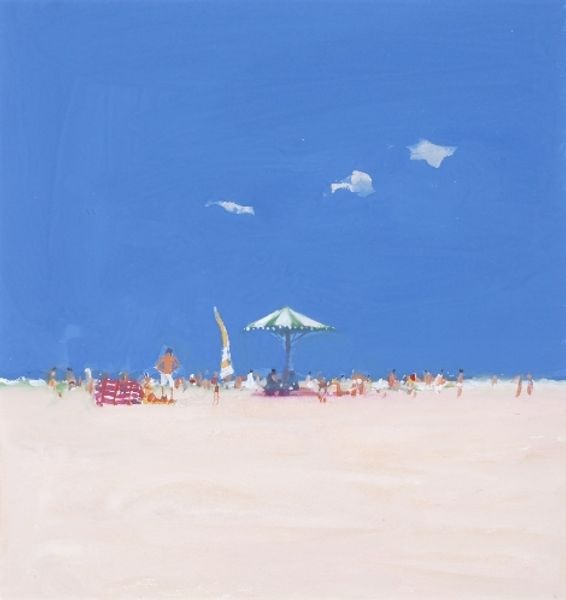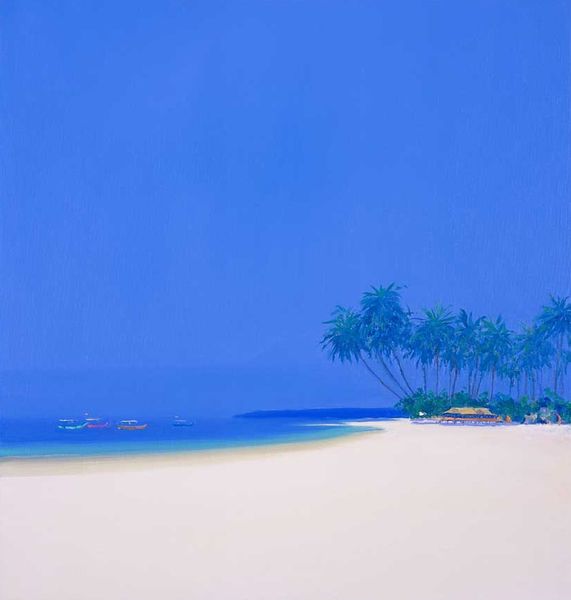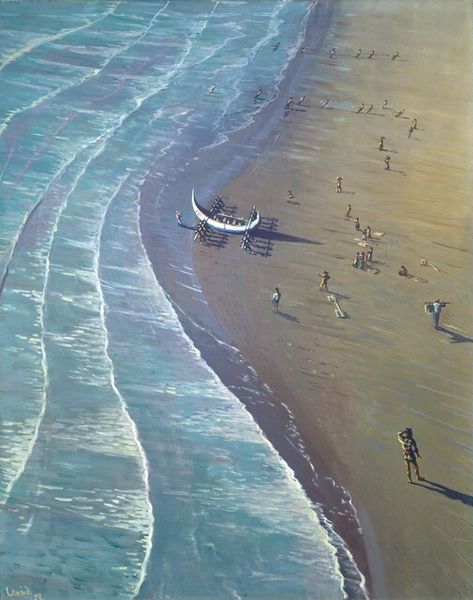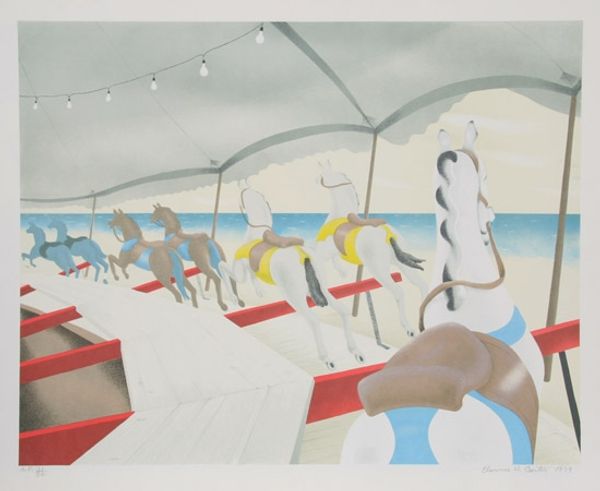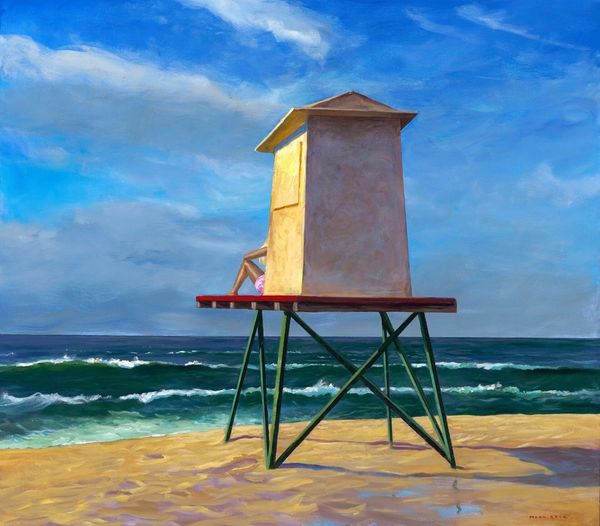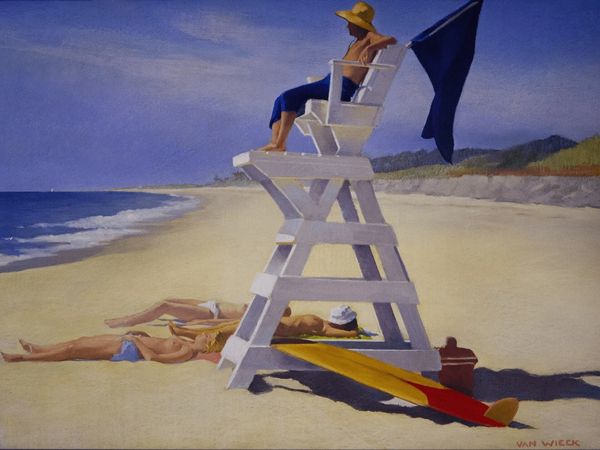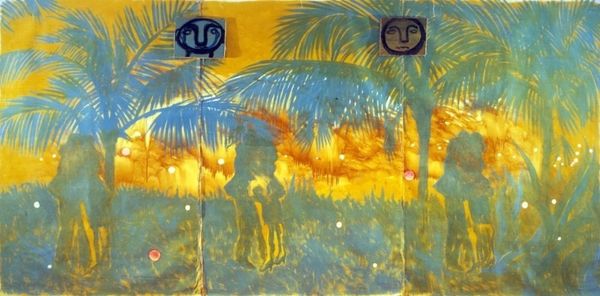
painting, site-specific, mural
#
painting
#
landscape
#
site-specific
#
mural
#
realism
Dimensions: image: 28.58 × 43.18 cm (11 1/4 × 17 in.) sheet: 40.64 × 50.8 cm (16 × 20 in.)
Copyright: National Gallery of Art: CC0 1.0
Editor: So, this is Frank DiPerna's "Sands Beach, Key West, Florida," from 1979. It’s a mural, making it site-specific, and it’s done in a realistic style. What immediately strikes me is the layered reality. It’s a painting of a beach scene on a building, existing alongside the actual building's structure like a window and doorway. How do you interpret this interplay of illusion and reality here? Curator: It’s fascinating, isn't it? The mural functions as a kind of trompe-l'oeil, inviting the viewer to question the boundary between what is real and what is represented. DiPerna uses recognizable imagery—boats, clouds, a figure on the beach—to trigger a collective memory of seaside experiences, yet he frames them within the decaying structure, highlighting the impermanence of our idealized memories. That weathered chain… what does it evoke for you? Editor: A barrier, maybe? Or a sense of something tethered. The idyllic beach scene is there, but it’s also kept at a distance. I suppose it keeps me from entirely escaping into that beach. Curator: Precisely! Chains often signify restriction or connection, acting as powerful cultural symbols. The weathered state and integration with a functional mural complicates that duality. Do you think the artist wanted the viewer to long for simpler, idealized experiences by layering his symbol amongst the decay of the mundane, while showing the continuity? Editor: I think so! The peeling paint suggests the passage of time eroding even our constructed realities. But that visual contrast emphasizes the idealized memory, doesn't it? It becomes even *more* potent *because* it is juxtaposed with age and the everyday. Curator: Yes, layering those ideas over time adds another rich layer. DiPerna is playing with this push and pull to evoke emotion by drawing from our well of cultural associations and experiences. Editor: That’s really insightful. It's more than just a pretty beach scene; it’s about memory and how we perceive reality itself. Curator: Exactly. Art often utilizes familiar symbols and cultural expectations to spark contemplation about the enduring human conditions: hope, decay, memory and connection. I will keep that in mind myself moving forward.
Comments
No comments
Be the first to comment and join the conversation on the ultimate creative platform.
